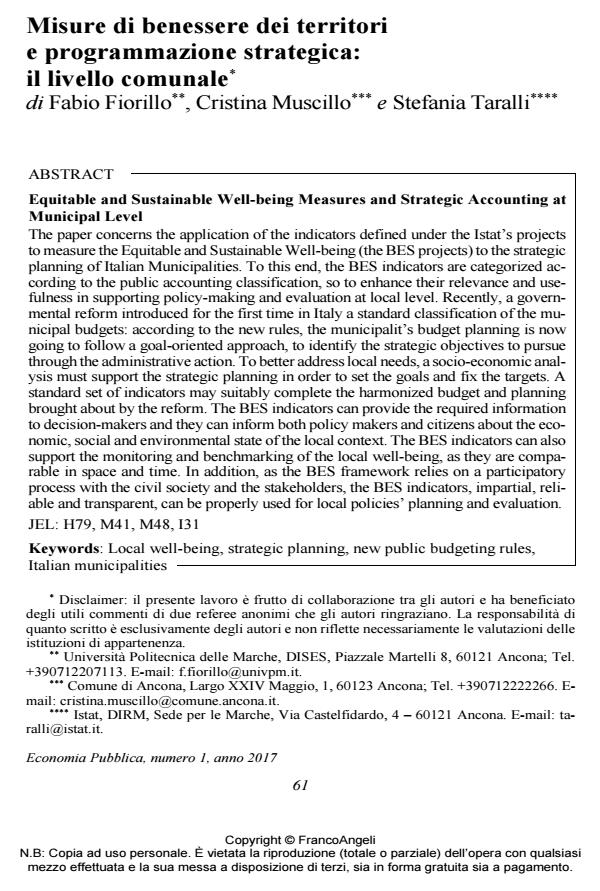Misure di benessere dei territori e programmazione strategica: il livello comunale
Titolo Rivista ECONOMIA PUBBLICA
Autori/Curatori Fabio Fiorillo, Cristina Muscillo, Stefania Taralli
Anno di pubblicazione 2017 Fascicolo 2017/1
Lingua Italiano Numero pagine 36 P. 61-96 Dimensione file 434 KB
DOI 10.3280/EP2017-001003
Il DOI è il codice a barre della proprietà intellettuale: per saperne di più
clicca qui
Qui sotto puoi vedere in anteprima la prima pagina di questo articolo.
Se questo articolo ti interessa, lo puoi acquistare (e scaricare in formato pdf) seguendo le facili indicazioni per acquistare il download credit. Acquista Download Credits per scaricare questo Articolo in formato PDF

FrancoAngeli è membro della Publishers International Linking Association, Inc (PILA)associazione indipendente e non profit per facilitare (attraverso i servizi tecnologici implementati da CrossRef.org) l’accesso degli studiosi ai contenuti digitali nelle pubblicazioni professionali e scientifiche
The paper concerns the application of the indicators defined under the Istat’s projects to measure the Equitable and Sustainable Well-being (the BES projects) to the strategic planning of Italian Municipalities. To this end, the BES indicators are categorized according to the public accounting classification, so to enhance their relevance and usefulness in supporting policy-making and evaluation at local level. Recently, a governmental reform introduced for the first time in Italy a standard classification of the municipal budgets: according to the new rules, the municipalit’s budget planning is now going to follow a goal-oriented approach, to identify the strategic objectives to pursue through the administrative action. To better address local needs, a socio-economic analysis must support the strategic planning in order to set the goals and fix the targets. A standard set of indicators may suitably complete the harmonized budget and planning brought about by the reform. The BES indicators can provide the required information to decision-makers and they can inform both policy makers and citizens about the economic, social and environmental state of the local context. The BES indicators can also support the monitoring and benchmarking of the local well-being, as they are comparable in space and time. In addition, as the BES framework relies on a participatory process with the civil society and the stakeholders, the BES indicators, impartial, reliable and transparent, can be properly used for local policies’ planning and evaluation.
Parole chiave:Local well-being, strategic planning, new public budgeting rules,
Jel codes:JEL: H79, M41, M48, I31
Fabio Fiorillo, Cristina Muscillo, Stefania Taralli, Misure di benessere dei territori e programmazione strategica: il livello comunale in "ECONOMIA PUBBLICA " 1/2017, pp 61-96, DOI: 10.3280/EP2017-001003